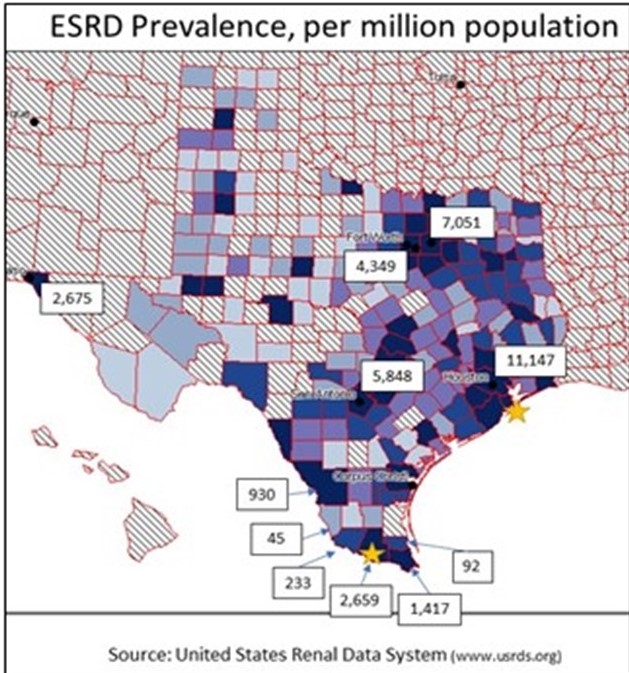Gray on the Border: A Closer Look at the Gap in Access to Kidney Transplantation for Hispanic Americans
A. Padilla, M. Mujtaba, R. Samper-Ternent, S. Al Snih, N. Perez, J. Fair, R. Kulkarni, E. Polychronopoulou, M. Kueht
University of Texas Medical Branch, Galveston, TX
Meeting: 2021 American Transplant Congress
Abstract number: 1272
Keywords: African-American, Hispanic, Kidney, Psychosocial
Topic: Clinical Science » Organ Inclusive » Non-Organ Specific: Disparities to Outcome and Access to Healthcare
Session Information
Session Name: Non-Organ Specific: Disparities to Outcome and Access to Healthcare
Session Type: Poster Abstract
Session Date & Time: None. Available on demand.
Location: Virtual
*Purpose: Hispanic Americans have disproportionately reduced access to kidney transplantation that is significantly affected by longstanding cultural and geographical disparities. These disparities are multifactorial and include long distances to transplant centers and delayed referral to transplant. To mitigate this lack of access, our center operates multiple clinics across the state including in the Rio Grande Valley (RGV), a region near the Texas-Mexico border.
*Methods: The study group comprised all patients evaluated for kidney transplantation between Jan 2015 and Aug 2020 at our institution. Socio-demographic characteristics, comorbidities, and time interval between declaration of ESRD and evaluation were compiled. These data were compared by race/ethnicity and between two clinical sites operated by our institution separated by over 390 miles with distinct population demographics: RGV (border) and MC (main-campus, inland). The proportion of life spent with ESRD prior to evaluation was also calculated.
*Results: 2,156 patients were evaluated for kidney transplantation during the study period (RGV: 441, MC: 1723). Four percent of patients at both sites had spent at least 20% of their lives with ESRD prior to evaluation for transplant. A greater proportion of patients at RGV were Hispanic (93% vs 38%, p<0.01). Across both sites, Hispanic patients were significantly younger at the time of evaluation (51 vs 56 yrs, p<0.01). Time with ESRD at time of evaluation was significantly longer at RGV (3.3 vs 2.7 yrs, p<0.01). The proportion of life spent with ESRD prior to evaluation was significantly longer at RGV than MC (6.9 vs 5.7%, p<0.01).
*Conclusions: Previous analyses of access to transplantation have focused on waitlist and transplant characteristics. This study demonstrated significant differences between both clinics at the beginning of the transplant process, the evaluation. These data support the need for continued efforts to create and maintain access to transplantation in at-risk socio-cultural groups such as Hispanic-Americans.
To cite this abstract in AMA style:
Padilla A, Mujtaba M, Samper-Ternent R, Snih SAl, Perez N, Fair J, Kulkarni R, Polychronopoulou E, Kueht M. Gray on the Border: A Closer Look at the Gap in Access to Kidney Transplantation for Hispanic Americans [abstract]. Am J Transplant. 2021; 21 (suppl 3). https://atcmeetingabstracts.com/abstract/gray-on-the-border-a-closer-look-at-the-gap-in-access-to-kidney-transplantation-for-hispanic-americans/. Accessed December 23, 2025.« Back to 2021 American Transplant Congress


